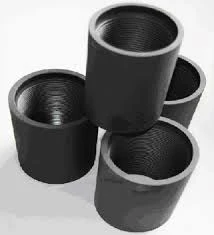- Afrikaans
- Albanian
- Amharic
- Arabic
- Armenian
- Azerbaijani
- Basque
- Belarusian
- Bengali
- Bosnian
- Bulgarian
- Catalan
- Cebuano
- Corsican
- Croatian
- Czech
- Danish
- Dutch
- English
- Esperanto
- Estonian
- Finnish
- French
- Frisian
- Galician
- Georgian
- German
- Greek
- Gujarati
- Haitian Creole
- hausa
- hawaiian
- Hebrew
- Hindi
- Miao
- Hungarian
- Icelandic
- igbo
- Indonesian
- irish
- Italian
- Japanese
- Javanese
- Kannada
- kazakh
- Khmer
- Rwandese
- Korean
- Kurdish
- Kyrgyz
- Lao
- Latin
- Latvian
- Lithuanian
- Luxembourgish
- Macedonian
- Malgashi
- Malay
- Malayalam
- Maltese
- Maori
- Marathi
- Mongolian
- Myanmar
- Nepali
- Norwegian
- Norwegian
- Occitan
- Pashto
- Persian
- Polish
- Portuguese
- Punjabi
- Romanian
- Russian
- Samoan
- Scottish Gaelic
- Serbian
- Sesotho
- Shona
- Sindhi
- Sinhala
- Slovak
- Slovenian
- Somali
- Spanish
- Sundanese
- Swahili
- Swedish
- Tagalog
- Tajik
- Tamil
- Tatar
- Telugu
- Thai
- Turkish
- Turkmen
- Ukrainian
- Urdu
- Uighur
- Uzbek
- Vietnamese
- Welsh
- Bantu
- Yiddish
- Yoruba
- Zulu
tubing collar
Understanding Tubing Collars in Oil and Gas Operations
In the oil and gas industry, efficient and safe operations hinge on the selection and application of various components and tools. Among these components, tubing collars play a critical role. They are essential fittings in the completion phase of drilling and serve multiple purposes, contributing both to the integrity of the well and the efficiency of production. This article delves into the importance, types, and applications of tubing collars.
What is a Tubing Collar?
A tubing collar is a specific type of accessory fitted onto the tubing string, which is the pipe used to transport hydrocarbons from the reservoir to the surface. The collar serves as a connection point that helps to configure the tubing assembly optimally for safe and effective extraction processes. Tubing collars are typically made of robust materials capable of withstanding high pressures and corrosive environments, ensuring a long operational life.
Functions of Tubing Collars
The primary functions of tubing collars include
1. Connection and Assembly Tubing collars provide critical connections for joining lengths of tubing together. This assembly must be strong and reliable to prevent leaks or failures that could jeopardize operation.
2. Pressure Management Tubing collars are designed to withstand extreme pressures found deep underground. They are vital in maintaining the pressure balance in the well during the extraction process, preventing blowouts or well control issues.
3. Well Completion These collars support the installation of well completion equipment, such as packers and subsurface safety valves. Proper collar placement allows for optimal placement of these components, furthering the efficacy of hydrocarbon recovery.
4. Facilitating Maintenance and Repairs Tubing collars are strategically located to allow for access to the tubing string. This facilitates maintenance and repairs without requiring extensive rework of the entire tubing assembly.
Types of Tubing Collars
tubing collar

There are several types of tubing collars, each tailored for specific applications and operational requirements. Some of the most common types include
- Swivel Collars These allow rotational movement within the tubing string, which is useful during drilling and other operations requiring rotation.
- Landing Collars Designed to facilitate the landing of various downhole tools, these collars ensure accurate positioning and secure attachment.
- Threaded Collars These collars feature threaded ends that provide a tight seal and are ideal for applications requiring frequent disassembly.
- Packer Collars Used in conjunction with packers, these collars help isolate sections of the wellbore and are essential for effective pressure management.
Applications in Oil and Gas Operations
The role of tubing collars extends across various stages of oil and gas operations. During drilling, collars are key to ensuring the structural integrity of the entire tubing string. In the completion phase, they enable the installation of tools necessary for hydrocarbon recovery. Furthermore, in production, tubing collars help in the implementation of monitoring equipment that checks for flow rates, pressures, and overall well performance.
Rigorous testing and evaluation of tubing collars are performed to ensure they meet industry standards and can withstand the harsh conditions prevalent in subsurface environments. Given the high costs associated with well failures, investing in quality tubing collars is a prudent decision for operators.
Conclusion
Tubing collars may seem like small components in the grand scheme of oil and gas drilling and production, but their impact is significant. They ensure safe, efficient, and effective hydrocarbon extraction, playing a pivotal role in the overall success of gas and oil operations. As the industry continues to evolve, advancements in materials and designs of tubing collars will likely enhance their performance, making them even more integral to oil and gas exploration and production processes. Understanding their functions, types, and applications is crucial for industry professionals aiming to optimize their operations and ensure the longevity of their assets.
-
Tubing Pup Joints: Essential Components for Oil and Gas OperationsNewsJul.10,2025
-
Pup Joints: Essential Components for Reliable Drilling OperationsNewsJul.10,2025
-
Pipe Couplings: Connecting Your World EfficientlyNewsJul.10,2025
-
Mastering Oilfield Operations with Quality Tubing and CasingNewsJul.10,2025
-
High-Quality Casing Couplings for Every NeedNewsJul.10,2025
-
Boost Your Drilling Efficiency with Premium Crossover Tools & Seating NipplesNewsJul.10,2025







